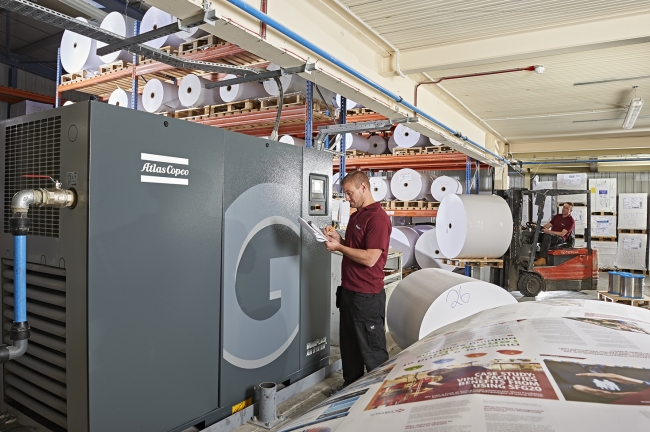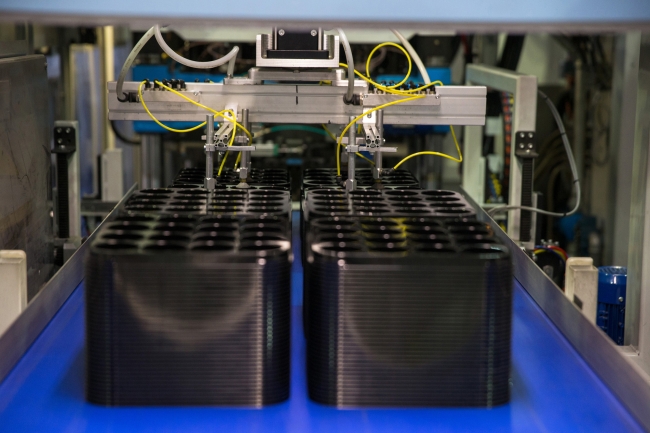3 minute read
Reducing energy bills: The first step is an energy audit and can take just 10 minutes
Stef Lievens from Atlas Copco Compressors looks at whether UK manufacturers could be missing out on major opportunities to save energy by overlooking the potential of their compressed air systems.
One barrier is the perception that assessing the efficiency of an air compressor network is disruptive and time-consuming. The reality is far from it, and below I argue that, when approached correctly, the process can be efficient, fast and hassle-free.
Indeed, when conducted responsibly, compressed air energy audits can quickly flag-up no-obligation opportunities for improvements and energy savings that companies can either implement themselves or work with their partners to realise. This is particularly pertinent for companies seeking to implement an energy management system while working towards achieving ISO50001. There’s also a strong case for companies that need to comply with Phase 2 of ESOS, which requires participating companies to conduct audits to identify cost-effective energy-efficiency opportunities. As air compressors typically consume between 10-12% of a factory’s electricity, and sometimes up to 30%, the potential for realising energy savings by conducting a compressed air energy audit shouldn’t be overlooked.

Buxton Press reduced CO2 emissions of approximately 48 tonnes following an investment in a new compressor / Picture: Atlas Copco
Thankfully the initial step couldn’t be any easier and involves a visual assessment, such as a free #airCHECK service, that can be conducted in as little as 10 minutes; without any disruption to production. By nature, this type of exercise is intended to flag-up ‘quick-win’ opportunities for end users to fix costly air leaks and address inefficient operating practices; such as leaving compressors to run during periods of low-demand like evenings and weekends.
Some companies may be under the illusion that their compressed air system is highly efficient, or simply happy that it is operating sufficiently. In either case, it causes no harm to undertake a quick #airCHECK, which can also be used to highlight whether a compressed air system is non-compliant or losing serious money.
For those wishing to investigate the potential savings in more depth, the next stage is to perform a straightforward data-logging exercise; such as an iiTrak system energy audit. Again, this type of no-obligation service is intended to be unobtrusive, with the required hardware usually taking less than 15 minutes to install. After set up, the data logging device is left to operate for a one-week period, during which AIRchitect software intelligently analyses compressed air usage patterns. Following this, participating companies will receive a free and detailed report, outlining where running efficiency improvements or energy savings could be made and highlighting any non-conformance with ISO standards.

Kingsmoor Packaging made a £47,000 energy saving following their energy audit / Picture: Atlas Copco
Making even small changes as a result of the initial visual assessment or full system audit can be enough to offer long-term financial savings and significantly decrease production costs. But don’t just take my word for it. Here are a couple of examples of UK-based companies who have recently benefited as a result.
• Award-winning magazine printing company Buxton Press participated in an iiTrak system energy audit that indicated the level of air leakage from its existing pipework was high. As a result, the company opted to install a new ring main and 75kW VSD compressor with ancillaries. This is calculated to result in an annual carbon reduction of approximately 48 tonnes of CO2, along with close to £7,500 per annum savings in compressed air energy costs.
• Kingsmoor Packaging, a privately-owned family business based in Somerton, Somerset, agreed to undergo an iiTrak survey to monitor its air demands during one week. The outcomes of the assessment resulted in a change from a 110kW to a 90kW VSD compressor, reducing the operating pressure of the installation and saving in the region of £47,000 per year.
